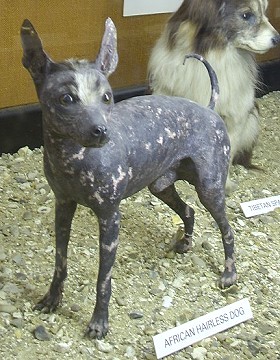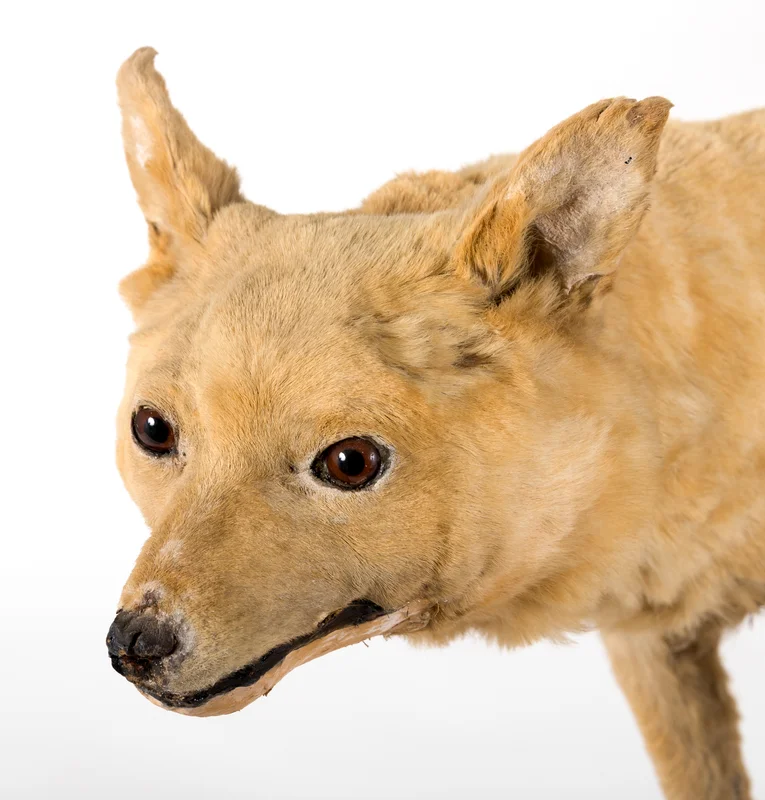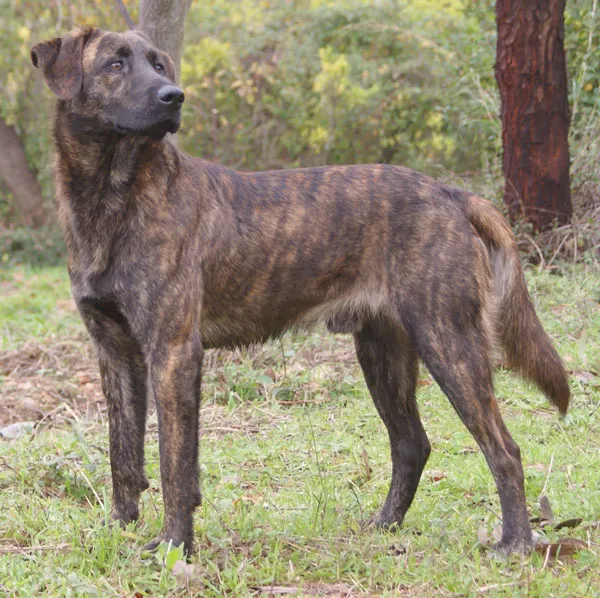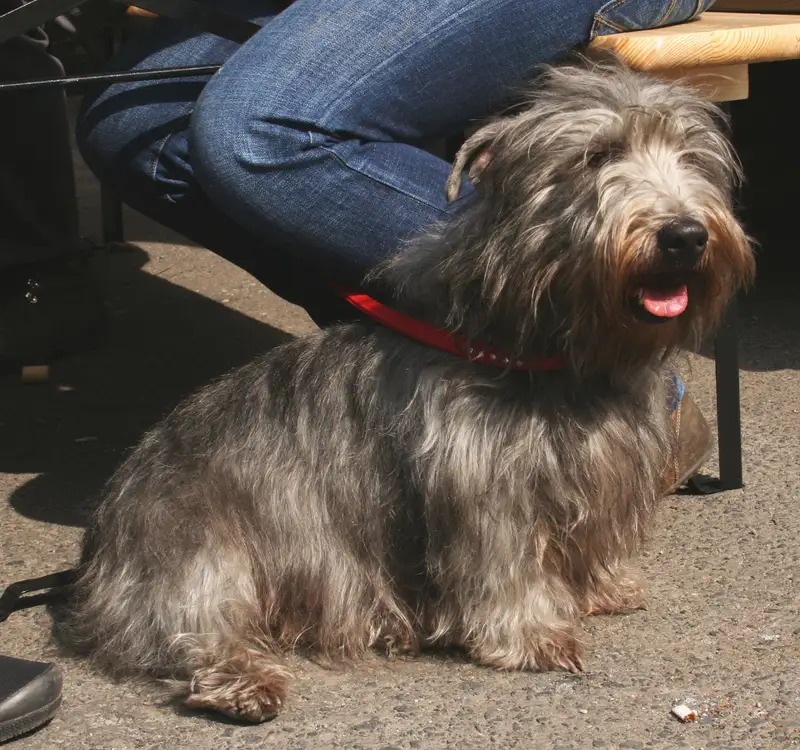Marquesan Dog
The Marquesan Dog, or Kuri Kuri, is a loyal and intelligent breed with deep Polynesian roots. Known for their affectionate nature and adaptability, they thrive in active households.
Overview
🐕Breed Overview
✨Key Traits
💡What Makes Marquesan Dog Special
One of the standout traits of the Marquesan Dog is its adaptability. This breed can thrive in both rural and urban settings, provided they receive adequate exercise and mental stimulation.
Their intelligence allows them to learn commands quickly, making training a rewarding experience for owners. Additionally, their affectionate nature means they form strong bonds with their families, often seeking companionship and interaction.
The Marquesan Dog's historical significance adds to its charm, as it represents a unique part of Polynesian culture and heritage. Owners who appreciate this breed will find a loyal and loving companion that embodies both strength and gentleness.
The Marquesan Dog, also known as the Kuri Kuri, is a breed steeped in rich Polynesian history and cultural significance. Originating from the migrations of the Maori people to New Zealand around 1280 AD, these dogs were integral to the lives of their owners, serving as both companions and sources of sustenance. The Kuri Kuri were utilized for their meat, and their skins were crafted into traditional garments, showcasing their multifaceted role in Maori society.
Unfortunately, the breed faced extinction following the arrival of European settlers, with the last known specimens preserved in the Museum of New Zealand Te Papa Tongarewa. In terms of temperament, the Marquesan Dog is known for its loyalty and intelligence. They are affectionate with their families and can be reserved with strangers, making them excellent watchdogs.
Their moderate energy levels require regular exercise, ideally around 60 minutes a day, which can include activities like walking, running, and engaging in dog sports. This breed is adaptable to various living environments but thrives best in homes with access to outdoor space. Training a Marquesan Dog can present challenges due to their independent nature, but with consistent and positive reinforcement methods, they can learn effectively.
Socialization is crucial to help them develop into well-rounded adults. Their unique history and characteristics make them a fascinating breed, embodying the spirit of the Polynesian islands. Overall, the Marquesan Dog is a breed that not only represents a significant part of Polynesian heritage but also offers companionship and loyalty to those who understand their needs and history.
Their adaptability, intelligence, and affectionate nature make them a wonderful addition to the right family, especially those who appreciate the cultural significance of this remarkable breed.
🎉Fun Facts
The breed is a rare example of a Polynesian dog that has nearly gone extinct due to colonization.
The last known specimens are preserved in a museum, highlighting their historical importance.
The Marquesan Dog was historically used as a food source by the Maori people.
Their skins were crafted into traditional garments, showcasing their cultural significance.
Breed Characteristics
Family & Friends
Good Behavior
Get Up & Go
Household Harmony
Temperament & Personality
✨Key Traits
🐕Core Temperament
The Marquesan Dog possesses a friendly and loyal temperament, making them excellent family pets. They are known for their affectionate nature, often seeking companionship from their owners. While they can be reserved with strangers, their protective instincts make them vigilant watchdogs.
This breed is intelligent and eager to please, which aids in training and obedience. They thrive on social interaction and enjoy being part of family activities. However, early socialization is essential to ensure they are well-adjusted and comfortable in various situations.
Overall, the Marquesan Dog's temperament is characterized by loyalty, playfulness, and a strong bond with their human companions.
💫Personality Profile
The Marquesan Dog is known for its loyalty and affectionate nature, making them excellent companions for families. They are intelligent and adaptable, thriving in various environments as long as their exercise and socialization needs are met.
These dogs tend to be reserved with strangers but are protective of their families, showcasing a courageous demeanor. Their playful spirit makes them great with children, and they enjoy engaging in activities that challenge their minds and bodies.
Overall, the Marquesan Dog is a well-rounded breed that can fit into many lifestyles, provided they receive the attention and care they require.
🔊Vocal Tendencies
The Marquesan Dog has a moderate noise level, typically barking to alert their owners of strangers or unusual sounds. They are not excessive barkers but will vocalize when necessary.
Their barking can serve as a warning, making them effective watchdogs. While they may bark during play or when excited, they generally maintain a calm demeanor in quiet environments.
Socialization and training can help manage their barking tendencies, ensuring they only vocalize when appropriate.
Affection & Social Traits
Energy & Activity
Communication Style
Care Requirements
🏃♂️Exercise Requirements
Daily Exercise
The Marquesan Dog, also known as the Kuri Kuri, requires a moderate amount of exercise to maintain its physical and mental health. Ideally, an adult Marquesan Dog should engage in at least 60 minutes of exercise daily. This can be broken down into two or three sessions throughout the day, allowing for both physical activity and mental stimulation.
Activities such as walking, running, and playing fetch are excellent for this breed, as they enjoy being active and engaged with their owners. Additionally, incorporating dog sports like agility or obedience training can provide both exercise and mental challenges. Puppies should have shorter, more frequent play sessions to avoid overexertion, while senior dogs may require gentler activities to accommodate their energy levels and joint health.
Regular exercise is crucial for preventing obesity, promoting cardiovascular health, and reducing behavioral issues such as anxiety or destructive tendencies that can arise from boredom or lack of activity.
Preferred Activities
🏠Living & Adaptability
Space Requirements
The Marquesan Dog is adaptable to various living environments but thrives best in homes with access to outdoor space. A house with a yard is ideal, allowing the dog to roam and play freely.
However, they can also adapt to apartment living if their exercise needs are met through regular walks and playtime. Owners in smaller spaces should ensure they provide ample opportunities for physical activity and mental stimulation to prevent boredom.
The breed's size and energy level mean that they can become restless in confined spaces, leading to potential behavioral issues. Therefore, providing a structured routine that includes outdoor time is essential for their well-being.
Climate Preference
🍲Feeding Guide
Schedule
Food Types
Portion Size
Special Nutritional Needs
The Marquesan Dog may have specific dietary needs based on their activity level and age. High-quality protein sources are essential for maintaining muscle mass and overall health.
Owners should be aware of any food sensitivities and adjust their dog's diet accordingly. Regular veterinary check-ups can help identify any nutritional deficiencies or health concerns.
✨Grooming Requirements
Grooming Overview
The Marquesan Dog has a short, dense coat that requires minimal grooming. Regular brushing once a week is sufficient to remove loose hair and keep the coat healthy.
Bathing should be done as needed, typically every few months or when the dog becomes particularly dirty. Owners should also pay attention to their dog's ears, trimming any excess hair and cleaning them regularly to prevent infections.
Nail trimming should be done every few weeks to keep their paws healthy and comfortable. Overall, grooming is relatively low-maintenance for this breed, making them suitable for owners who prefer a dog with less grooming upkeep.
Care Schedule
Brush weekly; bathe as needed (every few months); trim nails every 2-4 weeks.
Health Profile
⚕️Health Care
Regular health care is essential for the Marquesan Dog's longevity. Routine veterinary check-ups, vaccinations, and preventive treatments can help detect health issues early and ensure that the dog remains in optimal health throughout its life.
Owners should also be proactive in managing their dog's weight, dental health, and overall wellness through proper nutrition and regular exercise. By maintaining a consistent health care routine, owners can significantly enhance their dog's quality of life and lifespan.
Health Issues Overview
⏳Average Lifespan
Genetic Factors
Genetics significantly influence the Marquesan Dog's lifespan, as certain hereditary health issues may be more prevalent in the breed. Responsible breeding practices that prioritize genetic diversity can help reduce the risk of inherited conditions.
Potential owners should seek out reputable breeders who conduct health screenings and prioritize the overall health of their breeding stock. Understanding the genetic background of a dog can provide insights into potential health risks and help owners make informed decisions about their pet's care.
Living Conditions
The Marquesan Dog's lifespan can be influenced by various environmental factors. Dogs that live in active households with plenty of exercise and mental stimulation tend to live longer, healthier lives.
Access to outdoor space allows for regular physical activity, which is crucial for maintaining a healthy weight and preventing obesity-related health issues. Additionally, a stable and loving home environment contributes to their overall well-being, reducing stress and anxiety that can negatively impact their health.
Regular veterinary care and a balanced diet also play significant roles in promoting longevity.
🏥Common Health Issues
Hip Dysplasia
Warning Signs
🔬Diagnosis
Veterinarians typically diagnose hip dysplasia through physical examinations and X-rays.
💊Treatment
Treatment options may include weight management, physical therapy, or surgery in severe cases.
📝Management Tips
Maintain a healthy weight, provide joint supplements, and engage in low-impact exercises to support joint health.
Obesity
Warning Signs
🔬Diagnosis
Veterinarians diagnose obesity through weight assessments and body condition scoring.
💊Treatment
Weight loss programs, dietary changes, and increased exercise.
📝Management Tips
Monitor food intake, provide regular exercise, and consult with a veterinarian for a balanced diet.
🛡️Preventive Care
🔬Hip Evaluation
Hip Evaluation assesses the dog's hip joints for dysplasia and other abnormalities, which can lead to pain and mobility issues.
📅 Recommended annually for adults; more frequent for breeding dogs.
🔬Blood Work
A complete blood count (CBC) and chemistry panel help evaluate overall health and detect potential underlying health issues.
📅 Recommended annually for all ages.
Training
🧠Intelligence & Trainability
💪Work Drive
The Marquesan Dog has a moderate work drive, stemming from its historical roles as a hunting and companion dog. They thrive on tasks that engage their minds and bodies, such as obedience training, agility courses, and interactive play.
Providing them with jobs or activities that challenge their intelligence is essential for their overall well-being. Insufficient mental stimulation can lead to boredom and undesirable behaviors, so it's important to incorporate a variety of activities into their daily routine.
⚠️Training Considerations
Common behavioral challenges for the Marquesan Dog may include stubbornness and a strong prey drive, which can make training a bit challenging. These dogs may be independent thinkers, requiring consistent and patient training methods.
To overcome these challenges, owners should employ positive reinforcement techniques, such as treats and praise, to encourage desired behaviors. Socialization from a young age is crucial to help them become well-adjusted adults.
Engaging them in various activities and providing mental stimulation can also help mitigate behavioral issues related to boredom or excess energy.
📝Training Tips
Training a Marquesan Dog requires a firm yet gentle approach. Consistency is key, as these dogs respond best to clear commands and routines.
Start with basic obedience training, using positive reinforcement to reward good behavior. Incorporate fun activities like agility or obedience trials to keep them engaged and motivated.
Socialization is essential; expose them to different environments, people, and other animals to help them develop confidence and reduce any potential anxiety. Regular training sessions should be short and enjoyable to maintain their interest and focus.
History & Heritage
📜Origin Story
The Marquesan Dog's origin can be traced back to the migrations of the Maori people from East Polynesia to New Zealand around 1280 AD. These early settlers brought with them their dogs, which were essential for hunting and companionship.
The Kuri Kuri quickly adapted to the new environment, becoming a vital part of Maori life. They were not only a source of food but also played a role in cultural practices, with their skins being used to create traditional garments and tools.
As European settlers arrived, the Kuri Kuri faced challenges from introduced breeds, leading to their decline and eventual extinction in New Zealand. The breed's legacy continues to be honored through historical records and museum collections, preserving the memory of these remarkable dogs.
⏳Development History
The Marquesan Dog, known as Kuri Kuri in Maori, was developed from the dogs brought by Polynesian settlers to New Zealand. These dogs were bred for their utility as hunting companions and sources of food.
Over time, the breed adapted to the local environment and became integral to Maori culture. Unfortunately, with the arrival of European settlers and their dogs, the Kuri Kuri faced extinction due to competition and changing societal values regarding dog ownership.
The last known specimens are preserved in the Museum of New Zealand Te Papa Tongarewa, serving as a reminder of this unique breed's historical significance.
🛡️Purpose & Historical Role
Historically, the Marquesan Dog served multiple purposes for the Maori people. Primarily, they were used as a food source, providing sustenance during times of need.
Additionally, their skins were utilized to create clothing items such as cloaks and belts, showcasing their practical value. The breed also played a role in hunting, assisting in the pursuit of game.
Their presence in Maori culture reflects the deep bond between humans and dogs, as well as the importance of animals in traditional lifestyles.
🏺Cultural Significance
The Marquesan Dog holds significant cultural importance in Polynesian history, particularly among the Maori people of New Zealand. Introduced during their migrations from East Polynesia around 1280 AD, these dogs were not only companions but also served practical purposes.
They were a source of food and their skins were used to create cloaks (kahu kuri), belts, and decorative items. The breed is a testament to the rich cultural heritage of the Polynesian islands and reflects the deep connection between the Maori and their environment.
The extinction of the Marquesan Dog in New Zealand following European settlement highlights the impact of colonization on indigenous species and cultures.
Conservation Status
This breed is extinct and no longer exists in its original form.








